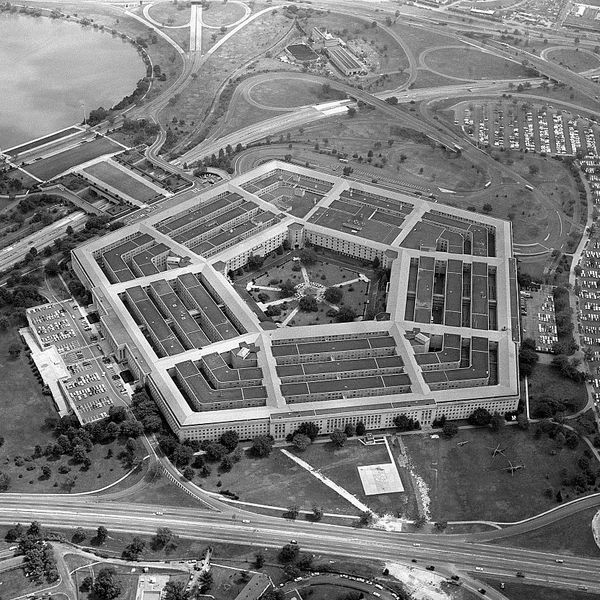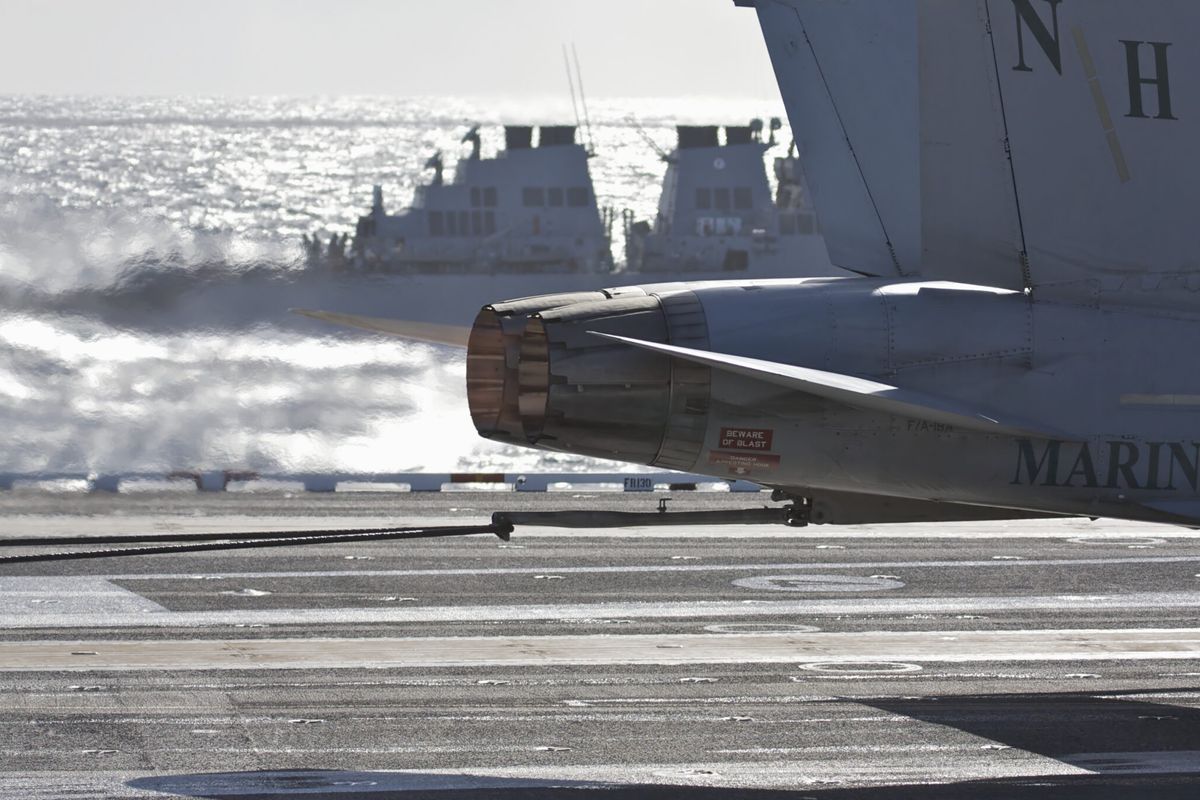OPINION — “Boeing is using new, automated manufacturing processes to drill holes prior to assembling the forward fuselage [of its F-15EX fighter aircraft]…According to [Air Force] program officials, Boeing has experienced increased quality deficiencies after switching to this new manufacturing process, including improperly installed tubing and wires that required time consuming rework…Officials noted that rework continued in other areas of the forward fuselage.”
That is a quote about Boeing’s F-15EX program from the Government Accountability Office (GAO) Weapon Systems Annual Assessment that was publicly released June 17, and which describes problem issues involving 108 of the most costly Defense Department (DoD) weapons programs.
With Boeing under fire from the public and Congress following a series of disasters and mishaps involving its commercial aircraft, I decided to look at the GAO’s report for Boeing DoD projects, since the company is among the top U.S. defense contractors.
The GAO report showed nine of Boeing’s major DoD programs have had cost overruns or quality problems and/or delays. In addition, other data shows that between March 2022 and November 2023, there were four fatal crashes of the Boeing/Bell Textron jointly-built V-22 Osprey, which functions as a helicopter and a turboprop aircraft.
At a hearing last Tuesday of the Senate Permanent Subcommittee on Investigations, Boeing CEO David Calhoun was questioned for over two hours about what Committee Chairman Sen. Richard Blumenthal (D-Conn.) called Boeing’s “culture that continues to prioritize profits, push limits, and disregard its workers.”
However, not one Senator asked a single question about Boeing’s defense business. Using the GAO report, I can imagine a future hearing on troubled Boeing weapon systems, perhaps starting with the F-15EX.
The Air Force planned for the F-15EX to be a temporary solution for delays in the F-35 5th generation fighter jet. As an upgraded 4th-generation fighter jet, the F-15EX was meant to deal with current or near-future threats. However, according to the GAO report, “Boeing data suggest that the cost of rework has more than quadrupled over the past year. Boeing is still refining the forward fuselage’s new, automated manufacturing process, which could result in increased rework costs and additional schedule delays.”
The Air Force One Problem
A more headline-grabbing subject would be a look into Boeing’s replacement of the two so-called Air Force One presidential aircraft, since that program took a turn after the 2016 presidential election thanks to the intervention of then-President-elect Donald Trump.
Called the VC-25B program, the GAO report describes the Air Force progam as modifying “the commercial aircraft [a Boeing 747] to provide the U.S. president, staff, and guests with safe and reliable air transportation, with the same level of security and communications available in the White House.”
Back in December 2016, then-President-elect Trump tweeted that he wanted to cancel the already-planned, $5 billion Air Force One project, adding, “I think Boeing is doing a little bit of a number…We want Boeing to make a lot of money, but not that much money.”
One day later, Boeing’s then-CEO, Dennis Muilenburg, met with Trump, congratulated him on the election and said Boeing would control costs of the Air Force One project. The resultant deal was a fixed-price contract for $3.9 billion, meaning any cost overruns would be paid by Boeing. The White House touted the deal as providing savings of more than $1 billion, and an example of Trump’s deal-making skills. The first of two planes was to be delivered in 2024.
In November 2019, DoD approved a ruling, originally proposed by Congress, that contract officers who prefer fixed-price contracts must receive higher-authority approval for certain cost-reimbursement contracts. The purpose was to control DoD costs; any overruns would be the contractor’s responsibility.
In April 2022, Boeing announced it had already lost $1.1 billion on the Air Force One project and delivery would be delayed until 2026. Last week’s GAO report said, “Incorporating interiors and wiring design changes led to structural design changes and modification rework, because Boeing was working on the design of the wiring as the aircraft was being built.”
The GAO report also said, “Boeing will not complete flight test plans for the two aircraft until their first flight dates, which are projected to occur in October 2024 and October 2025,” with first delivery now projected for 2027.
Other billion-dollar issues
Another Boeing defense project began in 2011 when Boeing agreed to a fixed-price $4.9 billion contract for a new Air Force air-refueling tanker, the KC-46. At that time, then-Defense Undersecretary Ashton Carter said Boeing had made a commercial decision to offer a below-cost bid for development of the aircraft in hopes of making up its losses during production of 179 of the aircraft through the 2020s.
Since 2011, Boeing has announced losses of $7 billion on what is known as the KC-46. As of January 2024, according to last week’s GAO report, the Air Force has fielded 80 KC-46As, but “The program continues to project at least a seven-year delay of its planned full-rate production decision from its original baseline, although the Air Force has yet to set a new date for the decision.”
Meanwhile, in June 2022, a critical review found the new tanker’s remote vision system, which enables a crew member to see the refueling boom, had to be redesigned, because the lack of a clear picture could cause the operator to scratch stealth aircraft during refueling. A Federal Aviation Administration airworthiness certification of the redesigned remote vision system was expected this year, but it and other issues continue to delay KC-46 production decisions.
In 2018, the Air Force awarded Boeing another fixed-price contract, this time $9.2 billion, to build, in partnership with Saab of Sweden, what became the T-7 Red Hawk sub-sonic, advanced trainer aircraft, plus simulators, maintenance training and support for those activities.
In June 2022, it was determined that scheduled production of the T-7 by 2024 was unachievable because of safety and test concerns, primarily with the escape system and potential for design changes, according to the GAO report. One specific issue has been that “ejecting from the aircraft continues to pose risks to smaller, lighter pilots,” the GAO report said.
By 2023, Boeing had reported about $1 billion in losses on the T-7 program because of delays and new charges. However, the company that year said the T-7 was a future franchise program with potential sales opportunities around the world, according to Defense One.
Biden administration fiscal 2025 budget documents said, “The first Low Rate Initial Production deliveries [of the T-7 are] anticipated in April 2026,” according to Defense One.
Another Boeing fixed-price contract signed in 2018 involved the Navy’s MQ-25 Stingray, a catapult-launched, uncrewed aircraft system designed to operate from aircraft carriers. The unmanned MQ-25 was originally seen as providing a refueling capability for carrier aircraft, but is now also expected to provide the intelligence, surveillance, and reconnaissance capabilities needed to identify and report on surface targets, according to the GAO.
The original contract had a ceiling price of $805.3 million and called for the design, development, fabrication, test, delivery, and support of four MQ-25 unmanned air vehicles, including integration into the carrier air wing for an initial operational capability by 2024.
Six years later, the program has yet to receive test aircraft to start developmental testing. Postponed delivery of developmental MQ-25 aircraft has forced the Navy to delay the low-rate production decision from September 2023 to July 2025. The GAO report said quality issues have also led to a six percent spike in cost.
Software integration for the MQ-25 “will be an iterative effort through 2025 and potentially longer to fix any deficiencies found during ground and flight tests,” the GAO report said.
Another Boeing project reviewed by the GAO is one that replaces the engines on 76 B-52H aircraft along with associated subsystems including the electric power generation system and cockpit displays. Boeing is managing the program and Rolls-Royce in supplying the new engines.
The GAO report said, “The critical design review, now planned for August 2025, [is] nearly two years later than previously planned.” That delay occurred, the GAO said, because Boeing’s proposal for detailed design work “exceeded the program’s available funding,” and as a result the Air Force “asked Boeing to slow its level of work to align with available funding.”
Boeing’s defense business has operated at a loss since 2022 – a $3.5 billion loss that year and $1.8 billion in 2023, largely due to post-pandemic supply chain impacts and technical issues associated with fixed-price programs.
In October 2022, DoD issued a rule repealing the 2019 requirement that contracting officers first consider fixed-price contracts and instead gave them freedom to consider cost-reimbursement contracts, which allocate cost and, in effect, share performance-risks between the parties.
Last year, Boeing’s CEO Calhoun said, “We have a couple of fixed-price development programs we have to just finish and [will] never do them again.”
The Cipher Brief is committed to publishing a range of perspectives on national security issues submitted by deeply experienced national security professionals.
Opinions expressed are those of the author and do not represent the views or opinions of The Cipher Brief.
Have a perspective to share based on your experience in the national security field? Send it to Editor@thecipherbrief.com for publication consideration.
Read more expert-driven national security insights, perspective and analysis in The Cipher Brief








